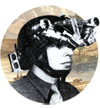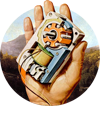Community Networking Best Practices
Categories:
LINKS
http://www.stockholmchallenge.se/data
http://www.digitaldividenetwork.org/
del.icio.us links
Research Reports International's The Growth of Municipal Wireless report: The 1st Edition of Research Reports International's The Growth of Municipal Wireless report is a comprehensive 90-page overview of municipal wireless. The report provides a look at the forces driving development of municipal wireless networks, the issues that municipalities have to address in developing wireless networks, and the current status of efforts to implement these networks.
Best Practices and Models
Four Models of Community Networking
1. Provide Community Internet Access
2. Community Internet Skills Training
3. Community Internet Content Publishing
4. Community Internet Interaction - Collaborative Capacity
The Four Levels of Community Networking
Consider the learning curve of communities as the following four levels of Internet community applications.
Level One: Create a community information portal web page to promote the community.
Presenting your community as you’d like to be seen can include announcing your community as “smart,” connected, and tech- savvy. One or more persons can create a one-way information page on behalf of community and maintain it at minimal cost. It is important for a community to develop the vision for how they’d like to be portrayed, but there’s more to being smart than announcing you are a smart community. Communities are realizing there are costs to not-knowing how to truly be a smart community actively engaging infrastructure at the highest levels possible in every day practice.
Level Two: Creating web pages for all businesses and organizations.
Many communities have encouraged all businesses and organizations to create web pages, but often these are not maintained and are not interactive so the real collaborative potential for ongoing sharing of information and development of new ideas has been minimal. There is a growing awareness that ongoing learning and development of web-based resources and collaboration results in new opportunities.
Level Three: Building a Learning Community
As understanding grows how better collaboration is increasingly instrumental to creating most modern success stories, it is being recognized that smart communities are the result of as many citizens as possible learning new skills to develop this powerful new collaborative capacity. Creating mentor rosters to facilitate sharing of expertise, gathering and posting locally the best online training resources from global sources, developing train-the-trainer peer mentoring incentives, and listing Ecommerce success stories - all serve to upgrade the status quo as to how people understand how they might benefit from Internet infrastructure - by working purposefully to grow their intellectual and collaborative info-structure. Community technology centers focusing on developing online self-directed learning and collaborative skills will logically result in effective online community networks leveraging the efficiencies of online collaboration and online knowledge sharing for everyone.
Level Four: Enlightened Expectations
Kate McMahon, past president of the Rural Telecommunications Congress stated “We all need to understand that the value of a network, and the collaborative capacity of a community, grows with the number of users. There is a big difference between having IT and using it effectively.” As any knowledge-worker will tell you - global change is accelerating. Internet infrastructure is an accelerator for progress or for disorganization, depending on how it is used. Staying current is the difference between riding the crest of the wave of change, and being overwhelmed as the wave crashes over you. Acknowledging that “less is more” in the age of information overload requires effective collaboration with emphasis on the quality of online summative information. We find ourselves seeking resources that summarize key trends in order to stay current.
We can expect to see digital storytelling of community successes grow as the dynamic by which communities learn from each other which strategies are working and which are not. We can expect to see increasingly inventive ways that communities will demonstrate just how tech-savvy they really are. Consider what story your community would like to tell and how this story can begin to become your template for collaborative action. Communities will see that by sharing their innovations with others, we’ll all have access to all our knowledge. Creating “communities of communities” will become an important survival strategy.
Community Networking Best Practices Models
La Plaza Telecommunity
http://www.laplaza.org
A successful model for a rural small town! "Bringing People Together" from educational, government, business, publishing, technology, library, and health care arenas, Taos, NM. Wireless innovations, a Community Wellness database and much more.
The Blacksburg Electronic Village
http://www.bev.net
Student activities, online newspaper and essays from Montgomery County, VA. Very high bandwidth to many home and reportedly 86% community participation make this a one-of-a-kind testbed model!
Boulder Community Network
http://bcn.boulder.co.us/
Boulder has years of development experience.
Prairienet
http://www.prairienet.org
700 local businesses and organizations have web sites posted.
Includes text-based conferencing in a web-accessible format.
Source of many innovations, such as their new asset mapping project led by Ann P. Bishop: http://www.prairienet.org/membercenter/ipservices/cl/assets
Metropolitan Austin Information Network (MAIN)
http://www.main.org
A successful large urban community network.
www.tincan.org
Gene Crick's http://www.telecommunity.us
A new CN handbook is planned.
Native American Community Network Visions and Models
- A summary of the best KNET CN innovations. http://lone-eagles.com/indigenous_resources.htm (See their flash page and videos) This is postnuke-based and the Lone Eagle Self-Employment Incubator site is at http://lone-eagles.knet.ca
- See the Aboriginal Fully Integrated Technology community flyer at http://lone-eagles.com/FIT.pdf
Aboriginal Voice - From Digital Divide to Digital Opportunity
http://knet.ca/documents/Aboriginal-Voices-Final-Report-Vol5_Doc_051122.pdf 30 pages. The last three pages provide a summary.
From the home site at www.crossingboundaries.ca/aboriginalvoice
Exceptional Readings
What Is Web 2.0: Design Patterns and Business
Models for the Next Generation of Software, by Tim O'Reilly.
http://www.oreillynet.com/lpt/a/6228
Community-based networks and Innovative technologies, New Models to Serve and Empower the Poor
http://propoor-ict.comunica.org/
The Dynamics of Technology for Social Change
http://technologyforsocialchange.com
If you feel the book merits other people reading it there is a press
release you can point people to or cut and paste in e-mail at:
http://internautconsulting.com/book/press.shtm
A 16 minute video on the Grameen Foundation's Micro Loans and ICTs Program Well Worth the Time!
http://www.grameenfoundation.org/newsroom/gfusa_video/
http://www.grameenfoundation.org/
“The Future of the Internet: Open or Closed?”
http://www.creativevoices.us/php-bin/news/showArticle.php?id=119
The link to his project: Capaciteria may be of most interest to AFCN members. It includes listing and link to AFCN.
Common Cause:
http://www.commoncause.org/site/pp.asp?c=dkLNK1MQIwG&b=489469
Best Drupal CN
http://civicspacelabs.org/home/
Four languages - interesting CN project from Brazil
http://catcomm.org
Today eBay, Yahoo, Amazon, Google and other large corporations are beginning to focus on providing localized services—free collaborative tools (groups.yahoo.com), free ecommerce web sites (tripod.com), free resume-building with local job searches (monster.com), local searches (google.com), local sales (froogle.com), local maps (mapquest.com), local classified ads (Craig's List), local satellite images and GIS mapping tools (earth.google.com), and even local dating (eharmony.com).










